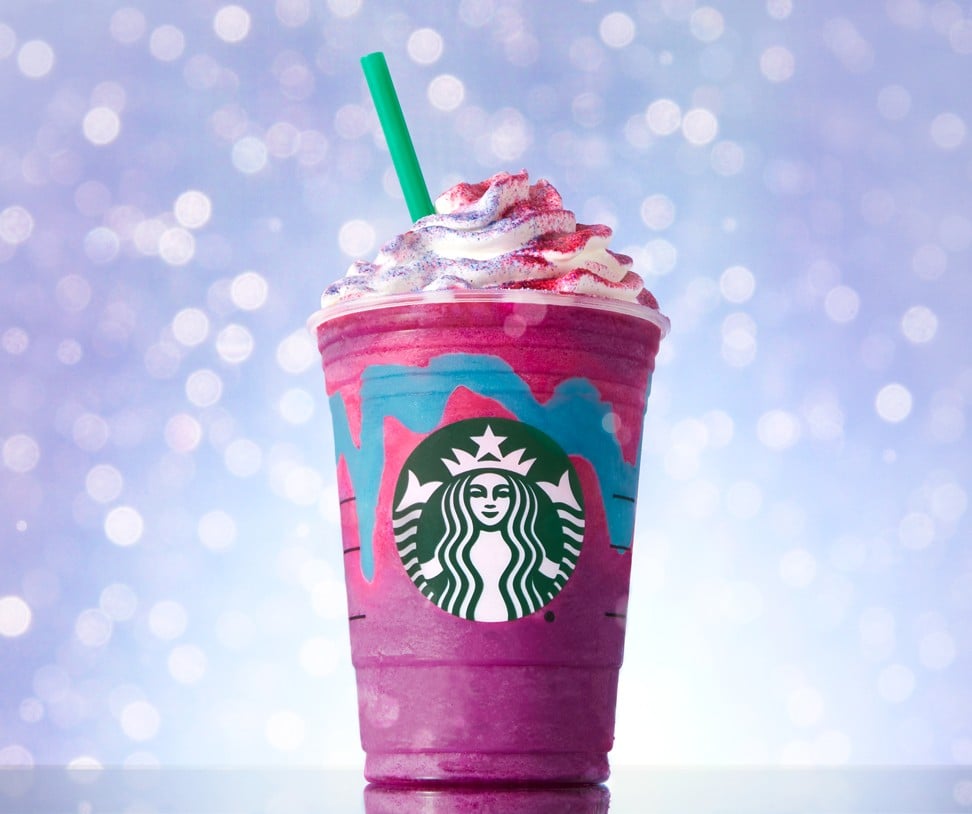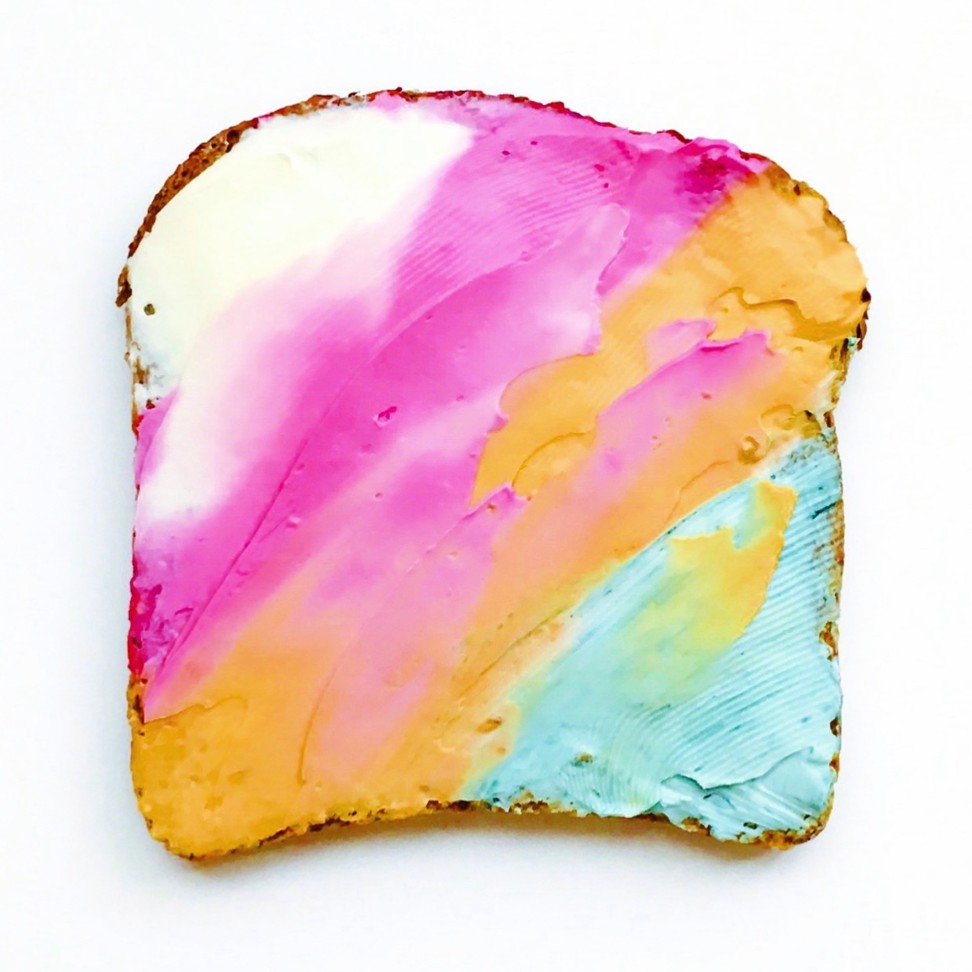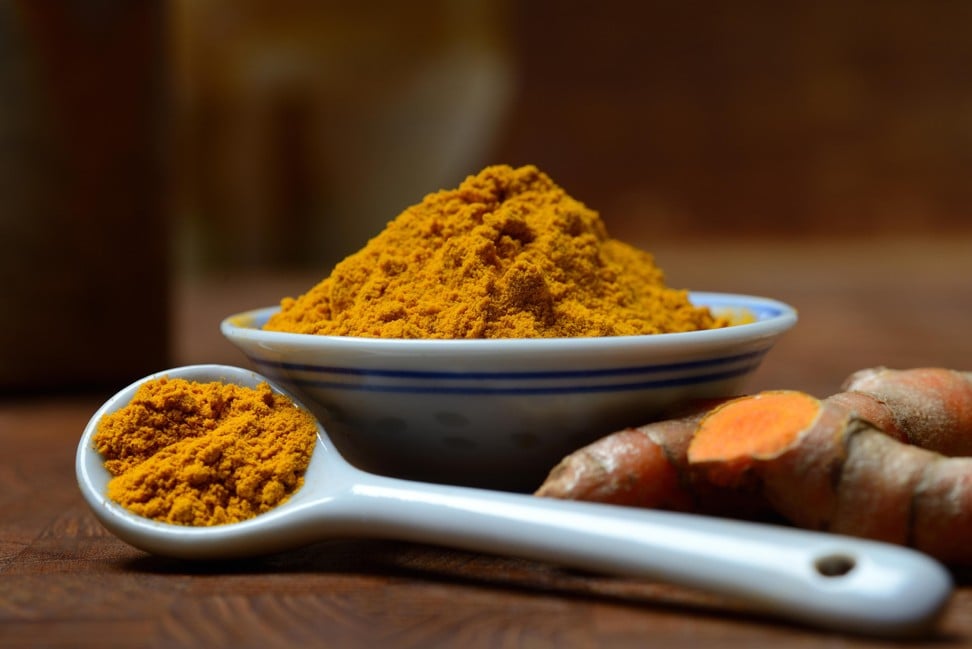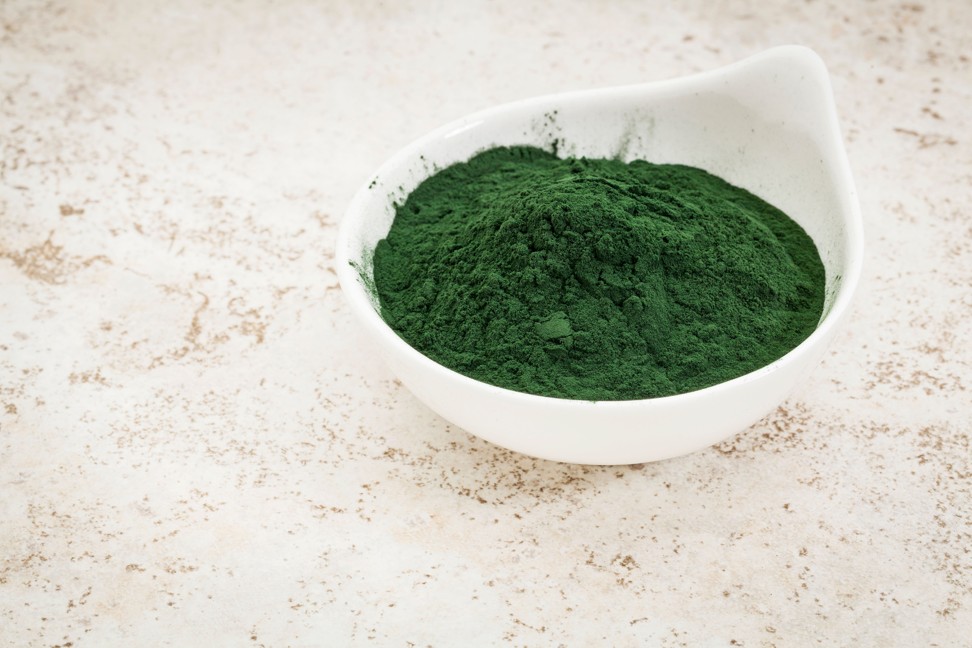Food stylist Adeline Waugh’s eye-catching rainbow toast is credited with kick-starting the fad, after she posted it on her health and wellness blog Vibrant and Pure. It was both pretty and pretty healthy, spread with low-fat cream cheese coloured with natural dyes.
Instagrammer Michael Zee’s symmetrical breakfasts, huge in Hong Kong – how they became an internet sensation
It was an instant hit with her followers, who claimed it resembled the multihued mane of a unicorn. Suddenly, Instagram was awash in photos tagged #unicornfood.
The hugely popular toast post triggered a flood of other fanciful “unicorn” creations, such as iced cupcakes and bagels adorned with mini marshmallows and sprinkles. Even Starbucks joined the trend, coming out with its bold, pink-hued Unicorn Frappuccino.

These treats hardly counted as “health food” – the Unicorn Frappuccino consisted mainly of milk, cream, syrups and fruit-juice concentrate, and the 700ml venti size delivered 500 calories, including 18g of fat and 75g of sugar. On the plus side, instead of artificial chemical dyes, the coffee’s colour was derived from real food – including turmeric, spirulina, cherry and sweet potato.
A return to Waugh’s original recipes reveals it is possible to whip up nutritious and delicious unicorn fare by using superfoods. Beets, sweet potatoes, turmeric, chlorophyll, spirulina, blueberries, matcha and blue-green algae are some of the all-natural foods high in vitamins and minerals that can be used to dye foods – including your own rainbow toast.

The ingredient list for the toast is relatively simple: toasted multigrain bread, low-fat cream cheese (regular or non-dairy), blackberries, strawberries, kiwi, cherry tomatoes, bananas, flaxseed (for extra fibre and omega 3), and some natural, powerful superfood dyes.

The dyes can be store-bought powders – available from local health-food shops – such as organic superfruit complex powder. Red powder includes a blend of goji berries, acai berries, strawberries, blueberries and other red berries; green powder is made up of things like spirulina, chlorella, wheatgrass, spinach and other greens. Turmeric, meanwhile, in powdered form, gives a golden yellow hue. Juice drained from fermented red cabbage, or juiced beets provide a pastel purple.
Use these dyes to add colour and a nutritional boost to foods such as hummus, cookie dough, doughnuts, bagels, cakes, bread, smoothie bowls, yogurt, ice cream, noodles, wraps and sushi rolls.
To make the unicorn toast, add the dyes in small amounts to batches of cream cheese to give it the depth of colour you prefer. Spread it on the toast in whatever pattern you find pleasing, mixing whichever colours suit your fancy. Top it with flaxseed, slices of berries, bananas or other fruit. Instagram it and serve.

Three magical ingredients to supercharge unicorn food
1. Beetroot
Natural beetroot is processed into juice or powder to provide a natural princess-pink dye – and a restorative boost. Beetroot earns its superfood status for its potential to help lower blood pressure, fight cancer and inflammation, and aid in the liver’s detoxification processes. It is nutrient dense and a good source of B vitamins – including folate, manganese, potassium, magnesium, phosphorus and iron – and vitamin C. It is also a good source of fibre, which is beneficial for digestive health and in reducing the risk of a number of chronic health conditions.

2. Turmeric
Apart from giving unicorn food a golden yellow colour and delicious, warming flavours, this spice is full of nutrients and antioxidants, including manganese, iron, magnesium and potassium. Curcumin, an active ingredient found in turmeric, has powerful anti-inflammatory effects.
Turmeric: the wonder food that should be every Hongkonger’s cup of tea

3. Algae
Spirulina, which can make unicorn food blue and green, is a nutrient-dense cyanobacteria and one of the oldest life forms on the planet. High in protein, it also contains seven B vitamins, iron and magnesium, and is rich in antioxidants, including phycocyanin.
Chlorophyll, a pigment that helps plants absorb light and start the photosynthesis process, gives unicorn food a green colour. Eating foods rich in this pigment – leafy greens and green vegetables – or having chlorophyll drops, may improve liver health.
Michelle Lau is a registered nutritionist (MSc), nutrition educator and founder of Nutrilicious, a Hong Kong-based nutrition consultancy company.
Click Here For More Articles
Don't forget to opt-in to Our Healthy Living Society and get 3 free gifts while receiving the latest information on health, well-being and groundbreaking news about natural nutrition.

No comments:
Post a Comment